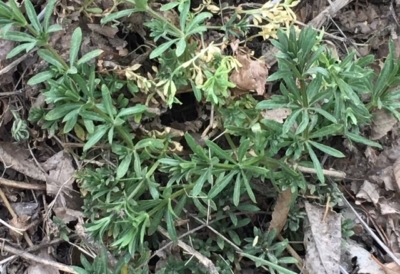Catchweed
Catchweed

Catchweed
The catchweed is also known as the bedstraw, grip grass, cleavers, and stickywilly. A fast-growing weed, it is native to all parts of the U.S., except for Hawaii. This is a weed that handles almost all elements thrown its way, growing in undisturbed and disturbed areas.
Where Will You Find Catchweed?
The weed grows in all types of vegetations. Woodlands, meadows, forests, and event cultivated crops offer the perfect breeding ground. However, it does most commonly prefer shrubby vegetations and gardens, as it likes the moist soils. You’ll usually find it during harvesting, as it tangles around the crops and the equipment being used.
You’ll know if you have catchweed, as the stems and leaves have fine hairs that look like hooks and similar to Velcro. It’s a sticky plant, which is why it gets tangled with crops and equipment. If used as a mattress filling, the plant will rise and feel like bedstraw (hence its name). They form small white four-petal flowers.
When Will You See Catchweed?
The plant tends to germinate seeds in the early spring. They then grow throughout the spring to reach six-feet in height. As they’re so thin and tall, they usually use other plants for support and can grow over other plants and vegetation. This affects the growth of the other plants. If left to grow, they become tangled with other species of plants.
Effective Uses for the Weed
One of the issues with the weed is that it can also be effective for medicinal needs. It’s been used by Native Americans to relieve poison ivy breakouts and itches. It’s also known to help reduce fevers and prevent bedwetting. The fruits can be removed and dried to make a caffeine-free coffee. The great news is management isn’t hard. The plants are very easy to pull and remove.


Comments are closed.